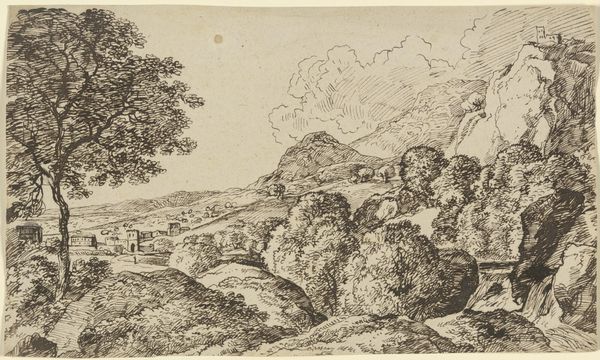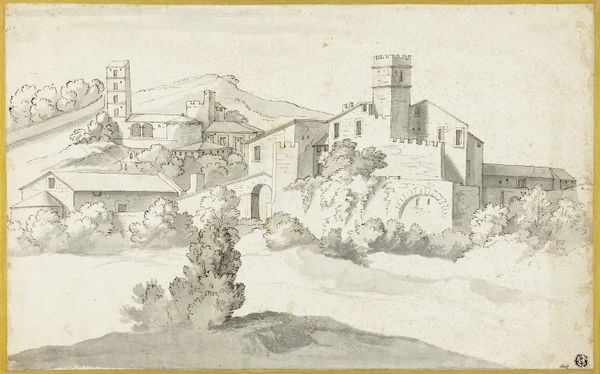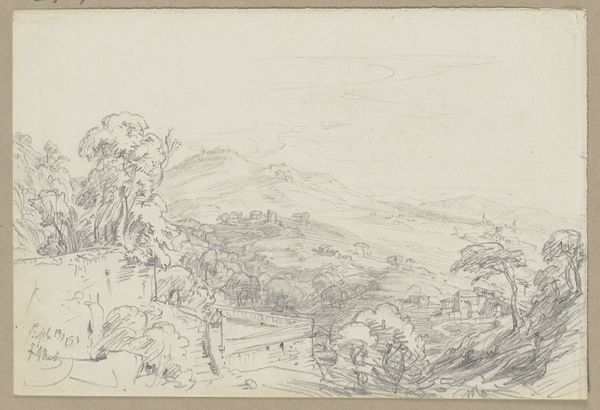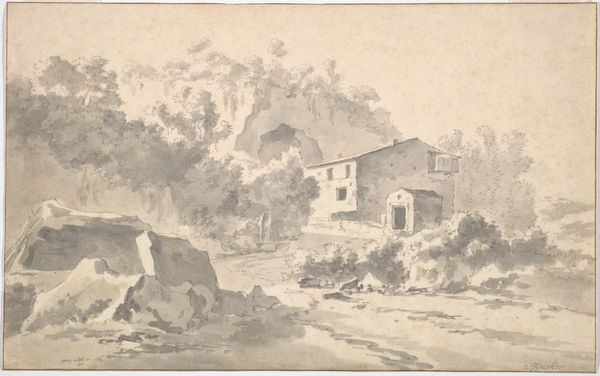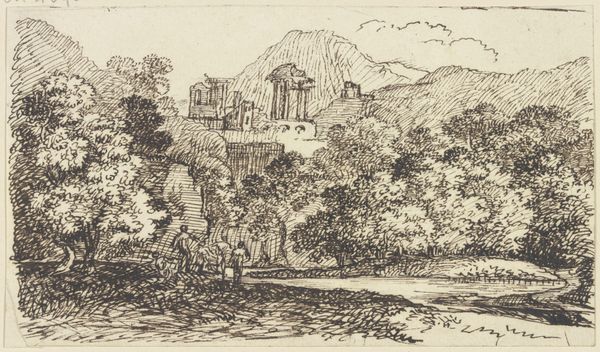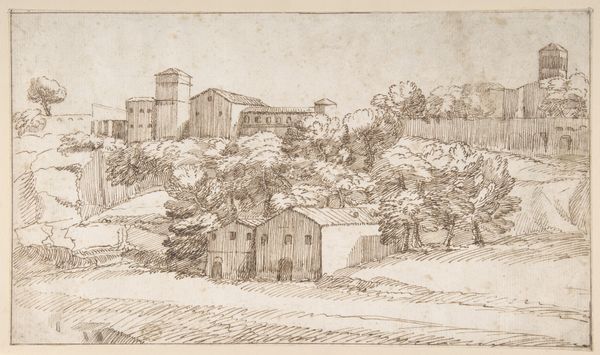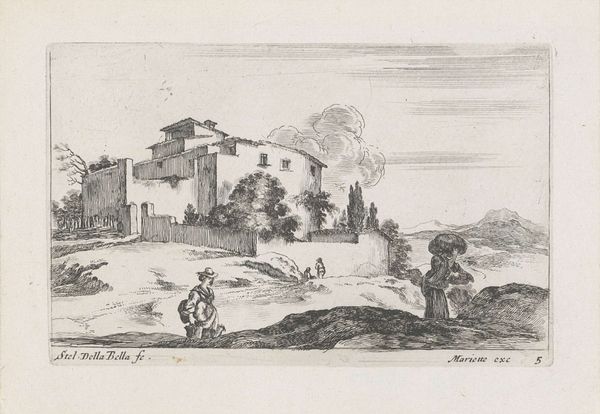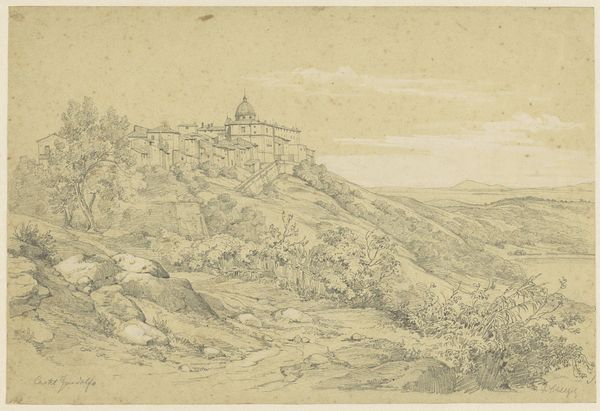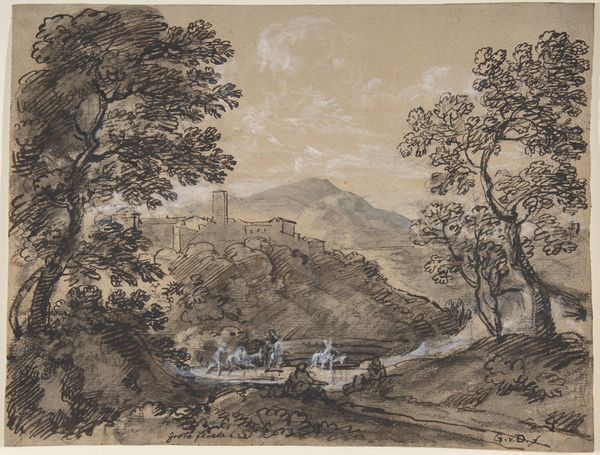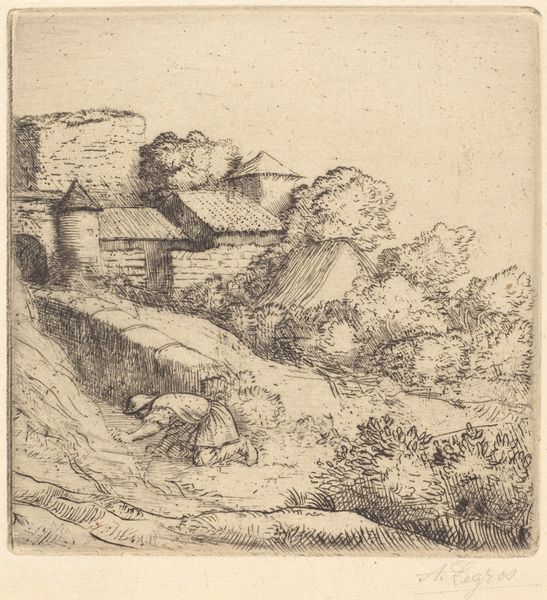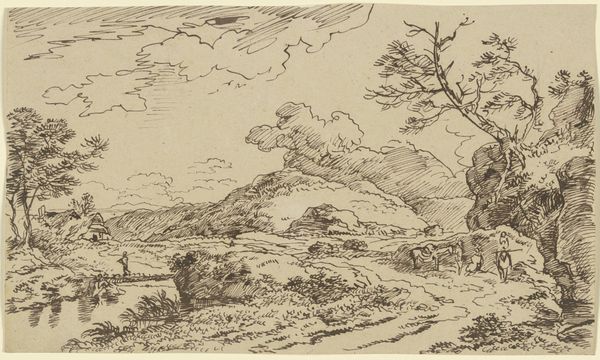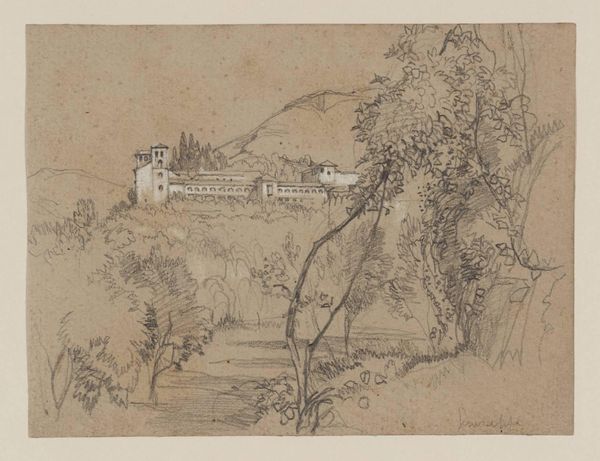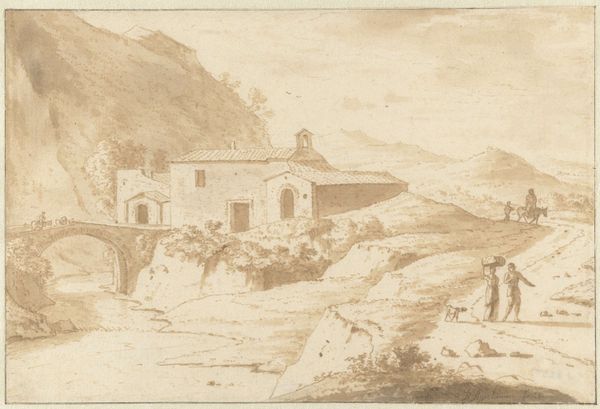
The Church of São Martinho in Sintra, Portugal 1755 - 1810
0:00
0:00
drawing, print, etching, ink
#
drawing
#
neoclacissism
#
ink painting
# print
#
etching
#
landscape
#
etching
#
ink
#
pen-ink sketch
#
cityscape
Dimensions: 10 9/16 x 15 9/16 in. (26.8 x 39.5 cm)
Copyright: Public Domain
Curator: Good morning. We’re standing before Pierre Lélus’ “The Church of São Martinho in Sintra, Portugal,” created between 1755 and 1810. It's a captivating ink and etching drawing. What are your initial thoughts? Editor: The scene has a muted but warm quality; an air of gentle decay in the ink tonalities perhaps, with the architectural rendering fighting against nature’s claim on the land. I am drawn to how delicate the marks are on the paper. Curator: Indeed. The composition invites careful viewing. The church dominates the hilltop, rendered with precise linework and an emphasis on geometric forms which give testament to the rise of neoclassicism at this time, the very notion of progress rendered permanently with these crisp lines. Editor: I notice how Lélus’ medium dictates the end result. Consider the etching: it's an indirect process, demanding planning and skilled labor. We might explore what paper was available at the time and how the artist used tools available to create his statement. Curator: I appreciate you bringing forward those observations. Lélus' careful construction of light and shadow, the subtle gradations achieved with etching and ink washes are designed to showcase the underlying architectural forms; notice that even nature in the piece yields in overall composition to those clear delineations of the central structure. Editor: However, it seems there is some rebellion against those architectural lines – the suggestion of figures and foliage seem in tension with the imposing lines of this formalist design. How does the relationship between labour – both of the creator, but also the hinted at labour of the figures at the roadside – complicate your notion of progress? Curator: A compelling point. The juxtaposition introduces a dynamic tension to the composition. We see his intention through semiotic markers, how the elements cohere. The verticality of the church is echoed in the towering foliage. Editor: By foregrounding materiality, production, and labor, one might uncover a new, richer reading of how neoclassicism took hold, seeing it not only through the clean lines of form, but with an acknowledgement of the artist, and the laborer as agents of their work and world. Curator: Thank you. Your attention to those nuances and contexts really adds layers to my appreciation. Editor: It was a pleasure to join you in examining how this piece and period were defined and delimited.
Comments
No comments
Be the first to comment and join the conversation on the ultimate creative platform.
